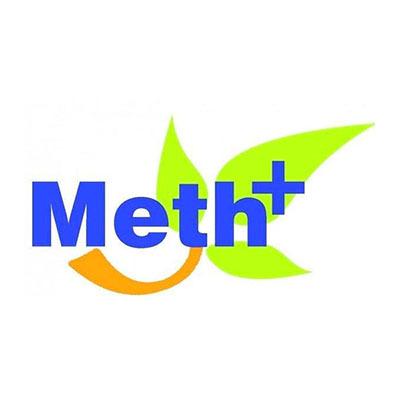Enzymes: a technical and economic vision
Interesting article. No doubt enzymes are an important tool in intestinal health. But there is still a long way ahead until we fully understand the complex interactions of all variables, like ingredient composition and its variation, usage of other additives, like organic acids, butyrate, etc, predominant microflora, and others. And this is even worse in swine, where intestinal fermentation can actually contribute to energy digestion, depending on animal size and feed rate of passage. We have been dealing with predicting microbial activity in ruminants for decades, and reliable models are now available. I feel only through modeling we will be able to fully understand how to get the most out of enzymes.
My approach is to concentrate on the digestion system of our pigs. If the right microbial environment is established then the feed content can be based on nutritional need. The same philosophy as applies to soil preparation rather than crop fertilization. We use probiotics in the drinking water for our pigs and achieve better feed conversion, healthier pigs and reduce smell and insect issues.
Hello there, long time no see. Good and interesting work Mike, but let me make a comment here. This balance fermentable CH/Protein you talk about, how would it be possible to let´s say, monitor in some way. I would argue how different that could be depending on which grain is the main one used in your diets - barley, wheat, corn -, and how much it can vary if the enzyme used is a simple activity/carbohydrase, Would you then recommend a more complex carbohydrase - more than one activity - enzyme added to the diet? Many thanks from a sunny Colmenar Viejo, Spain.
Hi Rafael
Great to hear from you and yes it is a long time!. You make an interesting point. Quantitatively the most untapped but potentially fermentable fibre source in the maturing bird (>14d of age) is xylan and to a lesser extent glucan. I used to think that the enzymes we were feeding quantitatively produced the prebiotics which were fermented in the caeca to offset the protein as discussed. But now I think from recent work we have been involved in that the NSPases we feed are releasing only minor amounts of oligosaccharides which are effectively signaling the microbiome to more aggressively directly attack the undigested fibre which is the polymer of the oligomeric signals we send. There are a few papers in process now (See Ribeiro et al in this months PSA) which allude to this effect. I also sort of cover it in BPS paper https://doi.org/10.1080/00071668.2018.1484074. So in short I would consider using an NSPase which directs the microbiome to attack the fibre fraction which forms the greatest fraction of the untapped potentially fermented fibre - to my mind this is mostly xylan but would be interested in comments!
Hi Rafael
Yes, exactly. I suspect we are simply releasing oligosaccharides in such quantities that they cannot be quantitatively fermented to produce the increments in VFAs we see in the caeca, rather they act as a signal to the caecal microbiome to start producing their own xylanases/cellulases to digest the xylan fibre more effectively. Have a look at our abstract in this year's PSA meeting (Bedford and Apajalahti) where we show that the caecal microbiome from a xylanase fed broiler is far more capable of digesting wheat bran fibre, XOS and even xylose than the microbiome isolated from birds that have never been exposed to a xylanase.
Regards
Mike
.jpg&w=3840&q=75)

Effects of superdoses of phytase on peaking Hy-Line W-36 laying hen egg production and egg quality
Interesting. It seems perfectly logical to me that if you change the substrate flow into the caudal gut (by increasing the rate of digestion of e.g. starch and protein or altering the solubility or tertiary structure of NSP) the microbiome will rapidly adapt to this new ecology and reorient itself accordingly. However, I find it a little difficult to accept that the major mechanism of a xylanase on this 'microbiome axis' is to generate only minor quantities of short-chain xylo-oligomers which in turn signal the microbiome to generate their own xylanases (and equivalent) and degrade polymers directly. The reason for my slight hesitation there is that NSP polymers almost certainly will not enter the caecum and so must be degraded and solubilized in the small intestine. I wonder how likely it is that the ileal microbiome would have the time (not to mention the inclination!) to adequately degrade polymeric arabinoxylan using only their own digestive architecture? Caecal - perhaps... I guess it is possible and, as I say, it is very logical that changing the substrate flow into the hind gut will cause adaptation in the microbiome and that this, in turn, will influence product generation, pH, temperature etc. I just wonder how much xylo-oligomer generation (and subsequent fermentation) the resident microbiome would be really capable of vs. exogenous xylanase activity? Interesting.
Aaron Cowieson Yes, interesting points Aaron, and I think some information just published fills in some of the gaps you allude to. We know that feeding xylanases increases xylanase activity of microbial origin dramatically and the ability of the microbiome to digest arabinoxylan in the form of insoluble wheat bran, soluble AX polymers, soluble AX oligomers and even xylose so there really is a "triggering effect" going on. One question that has yet to be answered is exactly what goes into the caeca and at what age. My guess is that the older bird opens up the caecal sieves and allows larger particles to enter which is currently under investigation and, if correct, explains a lot with regards to the timing and scale of response relating to this mechanism in particular.
Mike Bedford Interesting stuff. Look forward to seeing the caecal sieve info! One thing I can say with some certainty is that the effect of xylanase (and perhaps NSPases in general) appears to be really highly generic i.e. the mechanisms of benefit, whatever they may be, do not seem to favour some nutrients more than others. If you think back to the analysis we published on ileal amino acid digestibility with xylanase/glucanase we simply saw a recovery of 14-15% of the undigested amino acids across the board when xylanase was applied. This is in stark contrast with similar analyses in phytase or protease (which clearly 'favour' some amino acids more than others). To me this suggests that the major effect of xylanase must be on a macro level - perhaps residency of feed in the gastric gut (for example) or some other effect that influences the entirety of the incoming feed and not only some specific endogenous protein flow (as would be the case more with phytate/phytase). The microbiome modulation effect may explain this (would likely be generic via e.g. PYY signaling) and may then scale with substrate concentration in the lumen. An exception may be when viscosity kicks in as a limiting factor though in my opinion, this is increasingly less relevant over time...? Interesting discussion. Send me the papers you mention if you get a moment?

Hi
I do hope you may be interested in fermented cereal grains fed to poultry. These processed feed materials were shown to have improved nutritive value than unprocessed counterparts. You can check some papers on my page in researchgate. We have observed significant changes in NSPase enzymes, this it is possible these feeds are good sources of activated plant enzymes and of prebiotics which were not studied yet. In short microbial fermentation used to ferment cereal grains could be a beneficial way to improve nutritional and biofunctional properties from my studies.
Best regards.


METHPLUS® - Replacer of DL-Methionine
Enzymes have a better future in food and feed. Which way can we induce the nutrition values either by direct fermentation of feed or by addition of enzymes in the feed? Thank you
Good morning to all. I obviously think enzymes are more significant for poultry especially those enzymes are not produced in poultry like, Alpha galactosidase, Beta mannanase, Xylanase, Glucanase, Maize and soya contain nonstarch polysaccharide which can not be digested without above exogenous enzymes. If we do not use those enzymes in poultry feed a part of polysaccharide called non-starch excreted from the poultry body. So we can say enzymes have technical and economic importance in poultry. To solve this problem we can use Zympex 008 which manufactured by Impextraco, Belgium. Be good.
Good information. Food for thought and work in the future. What are the cost and benefits difference between untreated and ferment raw material? Is additional cost compensated by improved results?
Hi. I agree with Sir Mike. I had used several enzymes here in the Philippines for the past 26 years. And we are using corn and wheat based diets. And we had been maximizing all by-products in our animal diets. And with this, I had to formulate using various enzymes. In the current situation my country is facing regarding the continuous increase of price of corn, wheat is one of the major alternative to augment the increase in price of feeds. Thus using enzymes like Econase improves my animal performance. And with the present variability in quality of wheat arriving here, using Econase somewhat minimize these variability. Even with the use of copra, addition of mannase maximize its usage. With the advocate of minimizing or responsible usage of antibiotics as my social responsibility being a nutritionist, enzymes do help not only improve nutrient digestivility, but as Sir Mike discussed, and its involvement in increase population of good bacteria in the stomach and natural production of butyric acid explain as "triggering effect" that may lessen the stress in the animal and improve gut health. Am I right Sir Mike?


PROTEIN HYDROLYSATE POWDER - Soya Base
Dear Rodel
I agree, using of enzymes in sbm & wheat based diets is very vital to solving NSP problems, special when corn is expensive and we have to using wheat in large amounts.
This is a very interesting discussion that really starts dealing with fundamental issues. Far too long, we have neglected the interaction between exogenous enzymes and microflora. So, thanks for this initiative.
Please allow me to add a few cents to the topic. Shouldn’t we make a distinction between nutrients that are beneficial to the host animal versus those that aren’t?
• Glucose is a very good source of energy for the animal. Full hydrolysis of ß-glucans at an early stage in the small intestine should result in more glucose for the animal, thus reducing competition between animal and microflora for such glucose.
• Galactose: upon absorption, animals readily transform galactose into glucose. What’s more: galactose and glucose are during lactation combined into a disaccharide called lactose. Similarly to ß-glucans, when hydrolyzing the Raffinose oligosaccharides in the proximal intestine, this results in more galactose and sucrose made available as an energy source for the animal, while simultaneously reducing microbial growth in the small intestine.
• Mannose: is also metabolized within animal tissues, albeit somewhat less efficient compared to galactose.
• Xylose: represents a huge contrast compared to the above-mentioned monosaccharides. Absorption from the gut is highly variable, while the fraction that is absorbed is excreted in unchanged form into the urine. Vertebrates don’t seem to be able to metabolize xylose.
Several studies show that xylose supplementation as such is counterproductive and leads to wet litter due to urinary secretion of xylose. The early days of xylanase supplementation also showed that we can overdose xylanase in animal feed (in contrast to current practices of phytase Superdosing). Is it a valid conclusion that xylanase dosing should be in line with what the microflora is able to consume? Are xylanases producing prebiotics within the animal gut, thus establishing a microflora population that transforms xylose-polymers into VFA’s which are more beneficial for the animal compared to the original xylose-chains? In other words: should xylan hydrolysis in the small intestine keep pace with microbial growth in order to avoid the negative impact of xylose absorption?
Mike, your comments would be appreciated. Anyhow, thanks again for this initiative.


CYSTEAMINE HCL 50% - Digestive Enzymes
Henk Ghesquiere It is theoretically possible to overdose xylanase but in practice, I think this is unlikely to be a significant issue with most xylanases that are available commercially.
Firstly, most commercial xylanases are endo-acting and so do not produce appreciable quantities of free xylose or arabinose (which are known to have a net negative energy value for animals as they are readily absorbed but are incompatible with the citric acid cycle and so must then be deconjugated and excreted).
Secondly, all xylanases that are being sold in the EU (at the very least) have been through rigorous toxicity and tolerance examination in the target species at concentrations from 10-100x commercial doses and shown no negative effects (again, at the very least) on production performance or blood biochemistry. Final point is that galactose is fine for mammalian species but for avian species, this is not necessarily the case. Quite a bit of literature on that point. Makes sense really as avian species do not receive milk in the neonatal phase.
Dear Jo, please keep in mind that feed enzymes are working immediately, very quickly. However, probiotics need some time to reach the necessary cell count. That's why it is necessary to wait some time to probiotic effect will be paralelly realized. Or synergic effect, I absolutely agree with Dr.Henk's opinion.
Hello, just was drawn to the discussion that I found has been interesting.
Indeed enzymes are working nearly immediately on a substrate that is constantly consumed by the animal, thus creating a prebiotic effect as an steady stage condition manner. In the case of wheat-based diets using the right enzyme will deliver not only the reduction of gut viscosity but also the continuous manufacturing of VFA linked to changes in microbiota population. What everyone is looking for extra butyrate production which has shown to be very beneficial in poultry production. Also with the right enzyme or combination of enzymes, similar effect can be obtained in corn-based diets.





.jpg&w=3840&q=75)

















